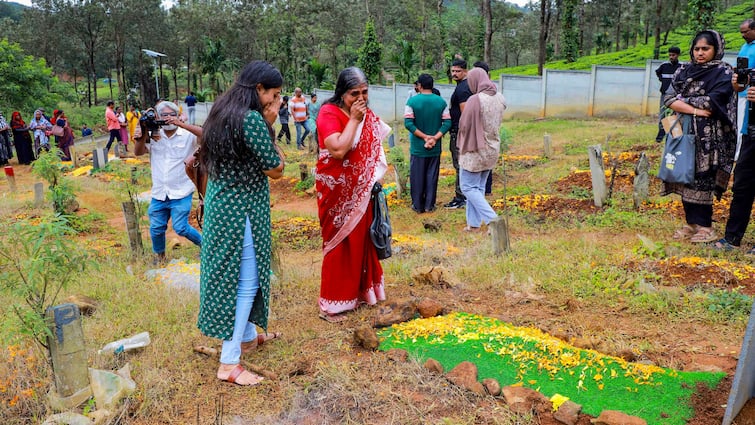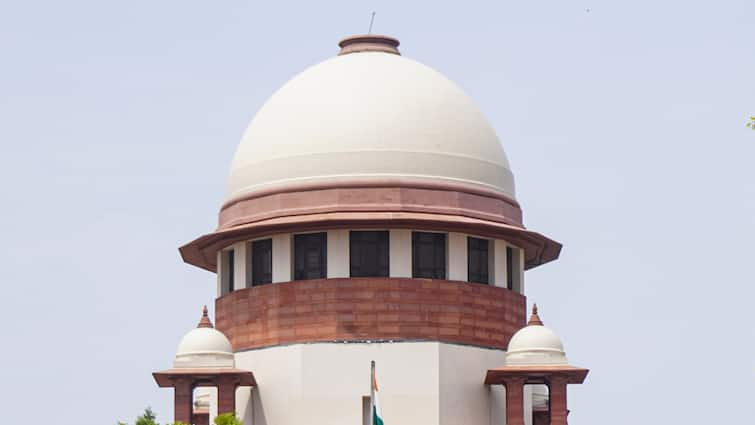Wayanad (Kerala), Sep 18 (PTI) Living on the edge of a government-declared “no-go zone”, scarred by last year’s devastating landslide that claimed 298 lives, several families in Chooralmala wake each morning unsure whether their homes will withstand the next spell of rain.
Although technically outside the danger zone, by only a few metres, the residents live within earshot of tragedy and are urging the government to relocate them before another disaster strikes.
A major landslide struck the Mundakkai and Chooralmala regions on 30 July 2024, almost completely decimating both areas.
Entry into Mundakkai remains tightly controlled.
Former residents are permitted to return briefly to retrieve things from their now abandoned homes, while mediapersons must secure a pass and can enter only until 3 pm.
The devastated village is accessible only through a 190-foot Bailey bridge built by the Army after the landslide to move heavy machinery and ambulances.
As you walk through the village, an eerie silence hangs in the air, broken only by the occasional crunch of footsteps on dried leaves and twigs.
All around, haunting sites of half-collapsed houses and crushed vehicles, narrate the scale of destruction.
Amid the ruins, some houses still stand with locks on their main doors –sign of families who left in haste with the hope of returning one day.
Friends and family members of those who perished in the tragedy often visit the area to offer prayers or relive the memories of happier times.
Among them was K Hamsa, a 54-year-old tea estate worker from Chooralmala, who lost his sister, brother-in-law, and niece in the disaster.
Living on the boundary of the no-go zone, he said, there’s an impending danger.
“We are living in constant fear of what if it (landslide) happens again? Will we survive? There is an impending danger, and this is why we want to move from here, but we are not eligible,” he said.
His friend and neighbour, Sudheer M, 48, said due to the landslide, two schools in the area, along with some government offices, were wiped out. Now they have been relocated to Meppadi, which is 13 km away.
“We have to travel there every day to drop off and pick up our children. It’s becoming very difficult,” he said.
Ummer, 62, who also works in a tea estate and lives in Chooralmala, said the marked area should be expanded to include people living on the edge of the vulnerable areas.
“I hope the government will pay heed to our request,” he said.
Asked about the plight of those left out, Revenue Minister K Rajan said the government has received numerous requests and they are under consideration.
“While the appeals have already been reviewed twice, the principal secretary for disaster management will reassess them by personally visiting Wayanad to examine each case before a final decision is taken,” Rajan told PTI.
“For the government, the priority will always be the welfare of the affected people and those living in vulnerable areas. Others living nearby may be covered under separate schemes or given compensation,” he added.
The State Disaster Management Authority comes under the Revenue Department.
The minister highlighted that on the first anniversary of the landslide on July 30, the government added 49 more people to the beneficiary list who would be getting an accommodation at Elstone Estate in Wayanad’s Kalpetta, where a new township is being built for the landslide victims.
Kerala Chief Minister Pinarayi Vijayan on March 27 laid the foundation stone for the model township that is coming up on government-acquired land in Elstone Estate. Congress MP from Wayanad Priyanka Gandhi Vadra was also present at the event.
The township shall comprise 1,000 square feet of single-storeyed houses on plots of seven cents each on the 64 hectares of land acquired by the government along the Kalpetta bypass.
(This report has been published as part of the auto-generated syndicate wire feed. Apart from the headline, no editing has been done in the copy by ABP Live.)



